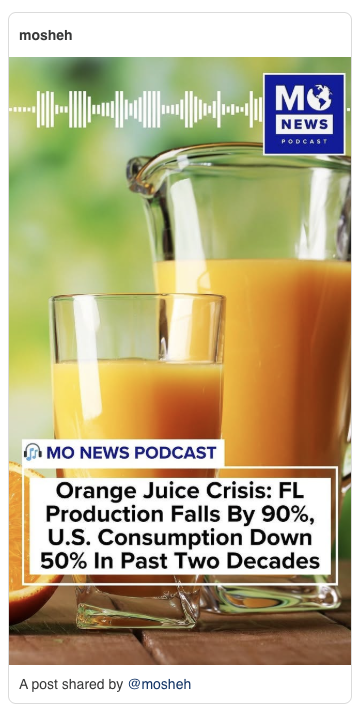Orange Juice Crisis: Production Down 90%, Consumption Down 50% In Past Two Decades
Orange juice is losing its spot at the breakfast table. U.S. consumption has dropped almost 50% in 20 years. Meanwhile, Florida’s citrus production has fallen by more than 90% during the same period, due to a disease affecting its orange groves.
A LOOK AT THE DECLINE
At its 1998 peak, Florida produced 244 million boxes of oranges; the USDA forecasts about 11-12 million boxes this season. Over the past decade, concentrated orange juice prices have reached $4.50 per 16 oz, up from $2.70 a decade ago.
Consumption decline comes amid doctors warning OJ has as much sugar as soda — and may be contributing to obesity and diabetes.
Florida’s groves have also been ravaged by climate change and a bacterial disease called citrus greening.
The disease, spread by an invasive insect, slowly kills trees and leaves them vulnerable to storms.
To help growers, the Trump administration has loosened the FDA’s definition of orange juice — lowering the required dissolved solids from 10.5% to 10%.
Bottom line: With prices up, crops down, and health concerns rising, OJ’s golden era may be gone for good.

